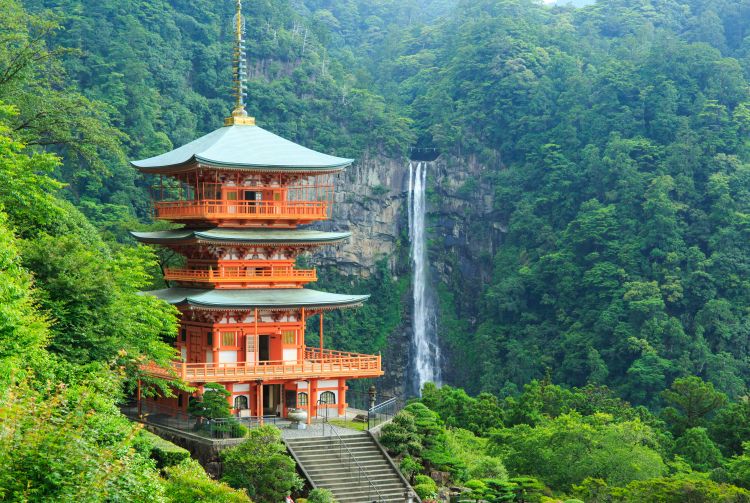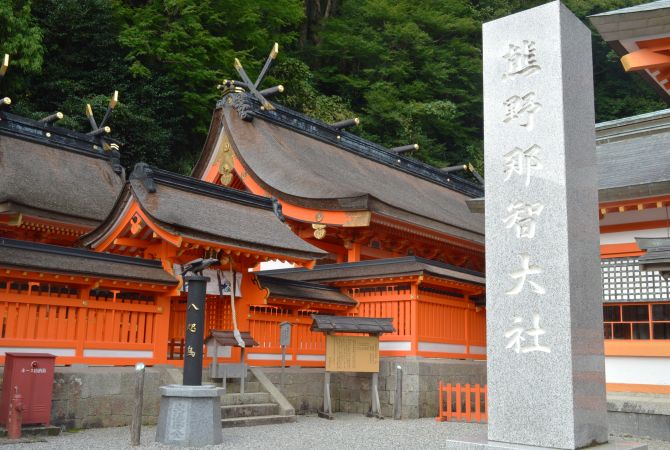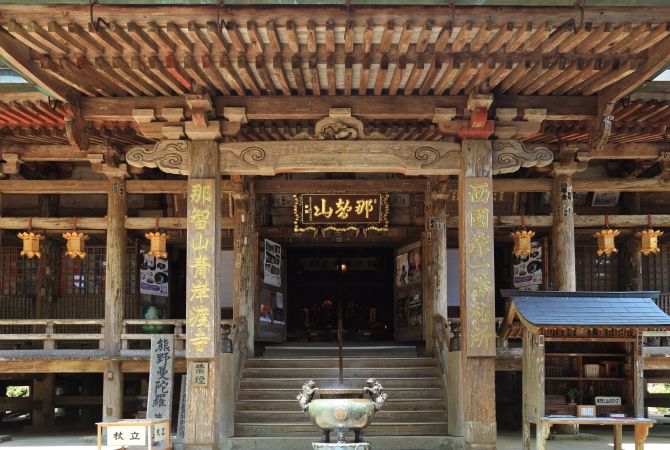Walk a thousand-year-old World Heritage pilgrimage trail
The Kumano Kodo Pilgrimage Route is one of the world's premier spiritual roads. Winding through the mountains of Honshu's Kii Peninsula, an area straddling Wakayama, Nara, Osaka and Mie prefectures, it's been walked by pilgrims on their quest for enlightenment for over a millennium.
Modern travelers come to experience moments of quiet contemplation, commune with nature, and go deep into Japan's spiritual history.
Don't Miss
- Treading the same paths as past pilgrims, including ascetics, samurai, emperors, and monks
- Kumano Nachi-taisha Shrine and its temple, a perfect example of Shinto-Buddhist fusion
- Taking advantage of the luggage shuttle services along the route so you can trek baggage free
How to Get There
The pilgrimage trails crisscross the Kii Peninsula, and access depends on your ultimate destination and how far you wish to hike. The main means of transportation to the area are Osaka, Kyoto, and Nagoya using the Kisei Mainline (also known as the Kinokuni line).
To access Kumano Nachi Taisha Shrine and Nachi Seigantoji Temple, take a 30-minute bus from Kii-Katsuura Station (on the JR Kinokuni Line) to the parking lot in front of the shrine and temple.
Access Kumano Hayatama Taisha via a 15-minute walk from JR Shingu Station, also on the JR Kinokuni Line.
Kumano Hongu Taisha is approximately an hour and 15 minutes from Kii-Tanabe Station (on the JR Kinokuni Line) via Ryujin Bus on the Kumano Hongu Line. Get off at Kumano Hongu Taisha-mae.
Quick Facts
The entire pilgrimage route is made up of seven trails
In 2004 the traditional trails along with their holy mountains were designated a UNESCO World Heritage site
A mythical three-legged crow is the symbol of the Kumano Kodo, and of Japan's national soccer team

Kumano, the dwelling place of the gods
Since its earliest days, the Kumano region has been regarded as a spiritually powerful area where gods inhabit the very fabric of the natural landscape.
During the Heian Period (794-1185), former emperors began making the arduous trek to the region in search of spiritual enlightenment. The pilgrimage gradually became more widely known from that time.

The spiritual triumvirate of Kumano Sanzan
Kumano Sanzan is the collective name for the area's three most sacred shrines: Kumano Hayatama Taisha Shrine, Kumano Nachi Taisha Shrine (including adjoining Nachi Seigantoji Temple) and Kumano Hongu Taisha Shrine .
Together they are the sacred center of the Kumano region. Uniquely designed and originally offering separate forms of nature worship, the three eventually merged, becoming a major pilgrimage destination.

99 Oji Shrines as spiritual signposts
While the Kumano Sanzan shrines remain the big draw of the pilgrimage, many smaller shrines are scattered along the route. Known as the 99 Oji Shrines, their purpose is to provide protection and guidance for the wandering pilgrims.
Religious harmony through Shinbutsu-shugo
Before political policy forced them apart in the late 19th century, Buddhism and Shinto coexisted quite peacefully as Shinbutsu-shugo, a fusion of the two belief systems. Shinto gods were considered to be indigenous manifestations of Buddhist deities. This was the norm in Japan for over a thousand years.
In the 19th century, Buddhism was separated from Shinto and many temples and Buddhist statues were destroyed.
While it's relatively rare to find Buddhist and Shinto elements intertwined today, Kumano Nachi Taisha Shrine and the adjoining Nachi Seigantoji Temple illustrate the traditional relationship very well.


























































